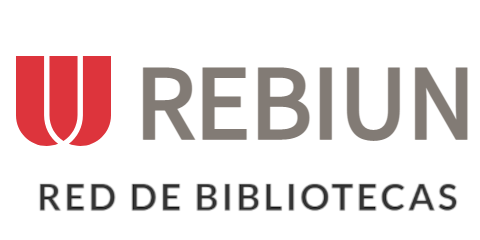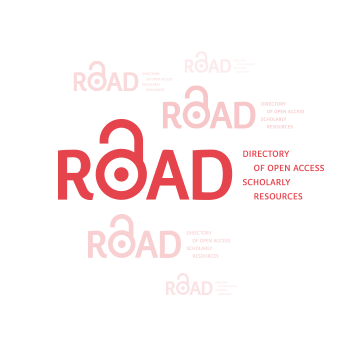Diseño de una Herramienta Tecnológica para Recompilar la Investigación Científica en los Estudiantes de una Universidad Nacional
Resumen
El presente trabajo de investigación surge de la necesidad de promover la investigación, es evidente en el ambiente académico que mientras mayor producción científica evidencia la universidad es señal de progreso y desarrollo en la educación. Para ello se propone diseñar una herramienta digital a través de la cual los estudiantes puedan ingresar sus trabajos académicos que aspiran a ser publicados en revistas indexadas nacionales e internacionales. Posteriormente, luego de una revisión académica por parte de docentes investigadores Renacyt, de acuerdo con un nivel o puntaje establecido podrá ser enviado a una revista que reúna las características necesarias. Adicionalmente, el software propuesto permitirá la interacción entre estudiantes y docentes investigadores para la retroalimentación de los productos académicos. El método de investigación que se desarrolla es bajo en enfoque cuantitativo, de alcance causal, de diseño no experimental y de corte transversal; además, se usó la metodología SCRUM para el desarrollo del software. La población está identificada como los estudiantes de la Universidad Nacional Federico Villarreal y la muestra de 40 estudiantes de la Facultad de Ingeniería Industrial y de Sistemas. La hipótesis planteada es que la herramienta tecnológica favorece el promover la investigación científica. El impacto o resultado del proyecto será el aumento de publicaciones científicas por parte de estudiantes de la Universidad y por ende el nivel de impacto académico en el ámbito nacional e internacional se verá mejorado en el ranquin de universidades con mayor número de publicaciones.
Descargas
Citas
Alhilali, A. H., Ali, N. S., Kadhim, M. F., Al-Sadawi, B., & Alsharqi, H. (2019). Multi-objective attendance and management information system using computer application in industry strip. Indonesian Journal of Electrical Engineering and Computer Science, 16(1), 371–381. https://doi.org/10.11591/IJEECS.V16.I1.PP371-381
Anderson, M., Chanthavane, S., Broshkevitch, A., Braden, P., Bassford, C., Kim, M., Fantini, M., Konig, S., Owens, T., & Sorensen, C. (2022). A Survey of Web-Based Tools for Collaborative Engineering Design. Journal of Mechanical Design, Transactions of the ASME, 144(1). https://doi.org/10.1115/1.4051768
Andrade-Arenas, L., Nuñez, D. L., & Delgado, A. (2022). Simulation with system dynamics on university student research. Indonesian Journal of Electrical Engineering and Computer Science, 28(1), 396–404. https://doi.org/10.11591/IJEECS.V28.I1.PP396-404
Andrés, E. M. S., Rodríguez, M. C., Pazmiño, M. F., & Mero, K. M. (2022). Tecnologías Web 2.0 en el proceso de formación universitaria: Programa de capacitación para favorecer el conocimiento y habilidades de los docentes. Formacion Universitaria, 15(1), 127–134.
https://doi.org/10.4067/S0718-50062022000100127
Asadi, S., Abdullah, R., Yah, Y., & Nazir, S. (2019). Understanding Institutional Repository in Higher Learning Institutions: A Systematic Literature Review and Directions for Future Research. IEEE Access, 7, 35242–35263. https://doi.org/10.1109/ACCESS.2019.2897729
Chamorro-Atalaya, O., Morales-Romero, G., Quispe-Andía, A., Villar-Valenzuela, D., Jeri-Sandoval, A., León-Velarde, C., & Aybar-Bellido, I. (2022). Teaching through virtual tools and its effect on the perception of student satisfaction. Indonesian Journal of Electrical Engineering and Computer Science, 26(3), 1599–1606. https://doi.org/10.11591/ijeecs.v26.i3.pp1599-1606
Da Cunha, I., & Ángeles Escobar, M. (2022). An automatic tool for the learning of discourse connectors. Tejuelo, 35(2), 205–233. https://doi.org/10.17398/1988-8430.35.2.205
Dhiravidachelvi, E., Suresh Kumar, M., Vijay Anand, L. D., Pritima, D., Kadry, S., Kang, B. G., & Nam, Y. (2022). Intelligent Deep Learning Enabled Human Activity Recognition for Improved Medical Services. Computer Systems Science and Engineering, 44(2), 961–977. https://doi.org/10.32604/CSSE.2023.024612
Feijóo, J. C. M., Suárez, F., Chiyón, I., & Alberti, M. G. (2021). Some Web-Based Experiences from Flipped Classroom Techniques in AEC Modules during the COVID-19 Lockdown. Education Sciences 2021, Vol. 11, Page 211, 11(5), 211. https://doi.org/10.3390/EDUCSCI11050211
García-Domínguez, A., Palomo-Lozano, F., Medina-Bulo, I., Ibias, A., & Núñez, M. (2023). Computing performance requirements for web service compositions. Computer Standards and Interfaces, 83. https://doi.org/10.1016/J.CSI.2022.103664
Ghasemi, A., & Saberi, M. (2020). The key factors in transforming Birjand city to a smart city: smart mobility, smart government. Indonesian Journal of Electrical Engineering and Computer Science, 19(1), 317–324. https://doi.org/10.11591/IJEECS.V19.I1.PP317-324
Giandini, R. S., & Pons, C. (2000). Relaciones entre casos de uso en el unified modeling language. Revista Colombiana de Computación, 1(1), 73–90. https://doi.org/10.29375/ISSN.2539-2115
Ginige, A. (2002). Web engineering: Managing the complexity of web systems development. ACM International Conference Proceeding Series, 27, 721–729.
https://doi.org/10.1145/568760.568885
Hajira Be, A. B., & Balasubramanian, R. (2018). Developing an enhanced high-speed key transmission (EHSKT) technique to avoid fraud activity in E-commerce. Indonesian Journal of Electrical Engineering and Computer Science, 12(3), 1187–1194.
https://doi.org/10.11591/IJEECS.V12.I3.PP1187-1194
Hassan, A. (2023). The Use of Facebook and Technology in E-Learning Process. Lecture Notes in Networks and Systems, 488, 995–1007. https://doi.org/10.1007/978-3-031-08090-6_64/COVER
Ibáñez, C. L., & Egoscozábal, A. M. (2008). Metodologías de la investigación en las ciencias sociales: Fases, fuentes y selección de técnicas. Revista Escuela de Administración de Negocios, 64, 5–18. https://doi.org/10.21158/01208160.N64.2008.450
Jie, L. P., Ramlan, R., Hassan, R., Omar, R., & Wei, C. S. (2020). Website quality of Malaysian Technical University. Indonesian Journal of Electrical Engineering and Computer Science, 18(3), 1624–1628. https://doi.org/10.11591/IJEECS.V18.I3.PP1624-1628
Kouser, S., & Majid, I. (2021). TECHNOLOGICAL TOOLS FOR ENHANCING TEACHING AND LEARNING PROCESS. Towards Excellence, 366–373. https://doi.org/10.37867/TE130133
Kuong Morales, M., & Kuong Morales, S. (2022). Scimago international bibliometric ranking: a reality for peruvian universities. Revista Venezolana de Gerencia, 27(7), 426–442. https://doi.org/10.52080/RVGLUZ.27.7.28
Martínez Mayorga, R. X., Rivera Naranjo, C. I., Sánchez Pacheco, M. E., & Zambrano Farías, F. J. (2022). Information and Communication Technologies in student academic achievement. Revista Venezolana de Gerencia, 27(7), 313–327. https://doi.org/10.52080/RVGLUZ.27.7.21
Martins, J., Bandiera-Paiva, P., Neto, A. R. B., de Carvalho, L. R. B., Padrini-Andrade, L., Machado, V. T., da Silva Junior, A. C., & Sun, S. Y. (2022). Development and validation of a health information system for assistance and research in gestational trophoblast disease. BMC Medical Informatics and Decision Making, 22(1), 1–12. https://doi.org/10.1186/S12911-022-01916-4/FIGURES/8
Mgonzo, W. J., & Yonah, Z. O. (2014). Design and Development of a Web Based Digital Repository for Scholarly Communication: A Case of NM-AIST Tanzania. International Journal of Knowledge Content Development & Technology, 4(2), 97–108.
https://doi.org/10.5865/IJKCT.2014.4.2.097
Mishra, D. P., Rout, K. K., & Salkuti, S. R. (2021). Modern tools and current trends in web-development. Indonesian Journal of Electrical Engineering and Computer Science, 24(2), 978–985. https://doi.org/10.11591/IJEECS.V24.I2.PP978-985
Mohamed, E. M., Bouikhalene, B., Ouatik, F., & Safi, S. (2019). AHP and TOPSIS methods applied in the field of scientific research. Indonesian Journal of Electrical Engineering and Computer Science, 14(3), 1382–1390. https://doi.org/10.11591/IJEECS.V14.I3.PP1382-1390
Mohialden, Y. M., abdulbaqi, H. A., & Shati, N. M. (2021). Developing collaboration tool for virtual team using UML models. Indonesian Journal of Electrical Engineering and Computer Science, 22(1), 38–44. https://doi.org/10.11591/IJEECS.V22.I1.PP38-44
Nagendra Prasad, S., & Kulkarni, S. S. (2021). Quality and energy optimized scheduling technique for executing scientific workload in cloud computing environment. Indonesian Journal of Electrical Engineering and Computer Science, 21(2), 1039–1047. https://doi.org/10.11591/IJEECS.V21.I2.PP1039-1047
Najm, Y. A., Alsamaraee, S., & Jalal, A. A. (2022). Cloud computing security for e-learning during COVID-19 pandemic. Indonesian Journal of Electrical Engineering and Computer Science, 27(3), 1610–1618. https://doi.org/10.11591/IJEECS.V27.I3.PP1610-1618
Okon, R., Eleberi, E. L., & Uka, K. K. (2020). A Web Based Digital Repository for Scholarly Publication. Journal of Software Engineering and Applications, 13(04), 67–75. https://doi.org/10.4236/JSEA.2020.134005
Oluwanifemi Itiola, C., Gabriel Iwasokun, B., & Damilola Adetooto, J. (2021). Development of an Online Repository for Academic Research Works in FUTA. International Journal of Sustainability Management and Information Technologies, 7(1), 22.
https://doi.org/10.11648/J.IJSMIT.20210701.14
Patrick, Melliano, K. T., Andriansyah, A., Warnars, H. L. H. S., & Moedjiono, S. (2023). The Web-Based History Learning Application for 6th-Grade Students. Lecture Notes on Data Engineering and Communications Technologies, 131, 779–791. https://doi.org/10.1007/978-981-19-1844-5_62/COVER
Pham, D., Hsu, K. R., Au, P. T., Pham, T. M., & Pennings, M. (2022). Extending Functionalities on a Web-based Portal for Research Computing. Practice and Experience in Advanced Research Computing, 1–4. https://doi.org/10.1145/3491418.3535182
Rajaram, K., & Selvi, K. P. N. (2023). CCC-Quality2: Cross-Cloud Service Composition Based on Quality of Clouds and Web Services for Business Applications. Lecture Notes in Networks and Systems, 401, 413–422. https://doi.org/10.1007/978-981-19-0098-3_40/COVER
Rao, P. R., & Sucharita, V. (2020). A secure cloud service deployment framework for DevOps. Indonesian Journal of Electrical Engineering and Computer Science, 21(2), 874–885. https://doi.org/10.11591/IJEECS.V21.I2.PP874-885
Ricci, R. C., De Paulo, A. S. C., De Freitas, A. K. P. B., Ribeiro, I. C., Pires, L. S. A., Facina, M. E. L., Cabral, M. B., Parduci, N. V., Spegiorin, R. C., Bogado, S. S. G., Junior, S. C., Carachesti, T. N., & Larroque, M. M. (2022). Impacts of technology on children’s health: a systematic review. Revista Paulista de Pediatria : Orgao Oficial Da Sociedade de Pediatria de Sao Paulo, 41. https://doi.org/10.1590/1984-0462/2023/41/2020504
Rivina, A., Malaya, N., Munar, E. A., Cuison, P., & Dacanay, E. G. (2022). Information management system for research of Don Mariano Marcos Memorial State University–South La Union Campus. Indonesian Journal of Electrical Engineering and Computer Science, 28(3), 1668–1675. https://doi.org/10.11591/IJEECS.V28.I3.PP1668-1675
Rodríguez, C., & Dorado, R. (2015). ¿Por qué implementar Scrum? Revista Ontare, 3(1), 125–144. https://doi.org/10.21158/23823399.V3.N1.2015.1253
Saleh, A. H., Yusoff, R. C. M., Bakar, N. A. A., & Ibrahim, R. (2022). Systematic literature review on university website quality. Indonesian Journal of Electrical Engineering and Computer Science, 25(1), 511–520. https://doi.org/10.11591/IJEECS.V25.I1.PP511-520
Teslyuk, V., Batyuk, A., & Voityshyn, V. (2022). Method of Software Development Project Duration Estimation for Scrum Teams with Differentiated Specializations. Systems 2022, Vol. 10, Page 123, 10(4), 123. https://doi.org/10.3390/SYSTEMS10040123
Vallez, M., Lopezosa, C., & Pedraza-Jiménez, R. (2022). A study of the Web visibility of the SDGs and the 2030 Agenda on university websites. International Journal of Sustainability in Higher Education, 23(8), 41–59. https://doi.org/10.1108/IJSHE-09-2021-0361/FULL/PDF
Walid Aboraya, A., Shemy, N., Said, S., Alkalbani, M., Shehata, N., & Abdelhady, B. (2021). Investigating the necessity of having digital repositories in postbasic education in Oman. International Journal of Internet Education, 20(1), 13–24.
Derechos de autor 2023 César Gerardo León-Velarde León-Velarde , Jorge Luis Tipe Carrasco , John Hebert Acha Jiménez , Diego Bardalez Plaza

Esta obra está bajo licencia internacional Creative Commons Reconocimiento 4.0.









.jpg)
























